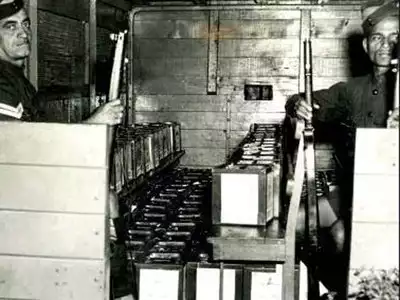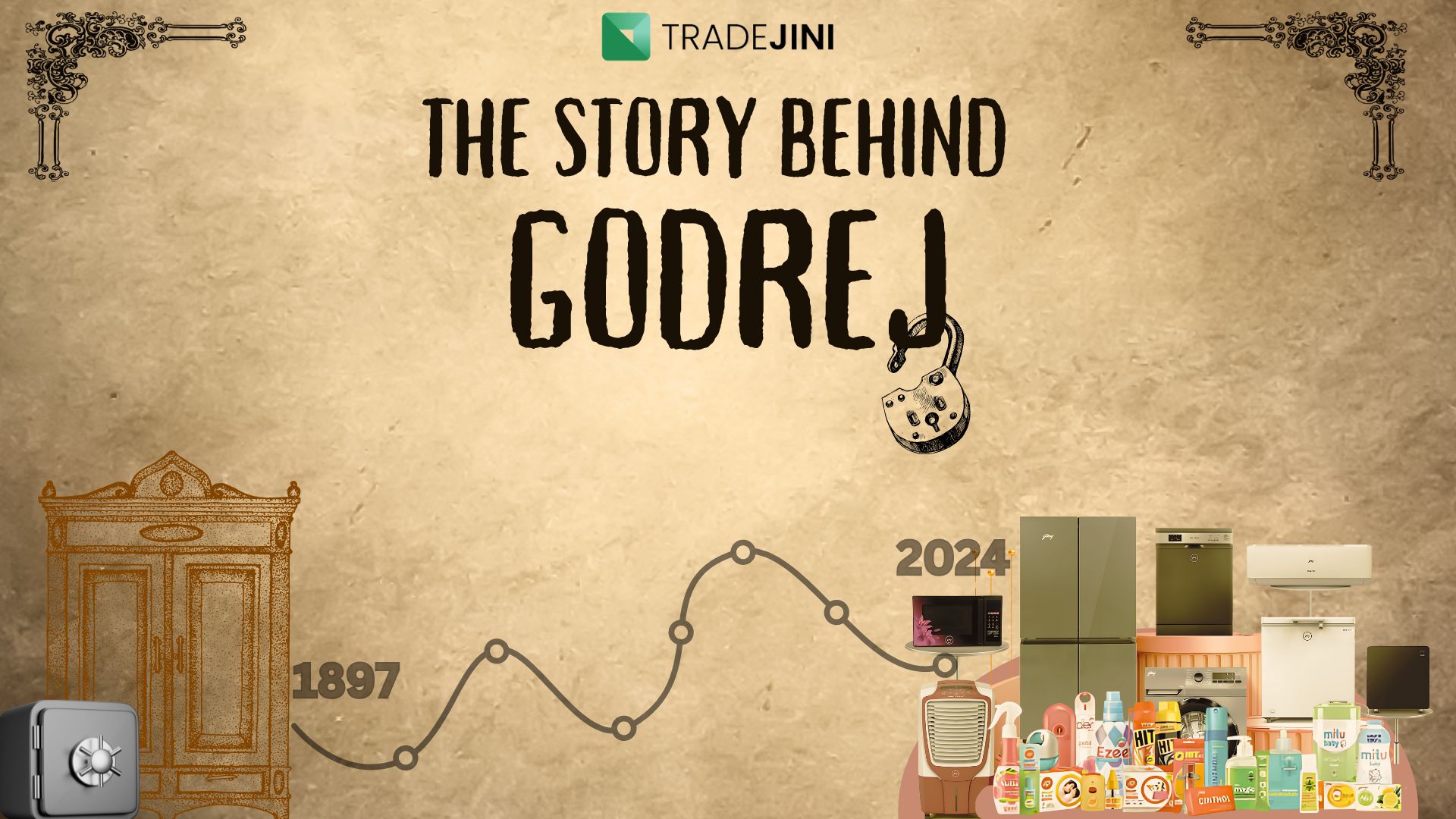When you think of lockers or safes, the first thing that comes to mind is the name- Godrej. The legacy and reputation of Godrej have been built brick by brick over the last 127 years.
Let’s take a trip back in time to Bombay and explore how Godrej became a household name in safeguarding valuables across generations.
The city of Bombay, renowned for its opportunities, attracted numerous immigrants, particularly from the Middle East. Among these diverse communities, the Parsis stood out. This industrious group migrated to western India, specifically to Gujarat and Maharashtra.’
History
The story of Godrej starts with Ardeshir Godrej, born to a wealthy Parsi immigrant family. He studied law but ended up working at a surgical instruments manufacturing company. At the age of 29, he read in the local newspaper about the rising crime rate and theft in the city due to people compromising or often neglecting safety. This sparked an idea for him to set up a lock manufacturing and selling operation. But there was one problem. Funding.
Luckily, that problem was solved by Merwanji Muncherji Cama, a close friend of Adi Godrej’s father. Cama generously provided ₹3000, which was a significant sum at the time, to help kickstart the business. So in the year 1897, they began producing high-security ‘unpickable’ locks under the Anchor brand. Ardeshir patented innovative designs and emphasized on modern manufacturing techniques, ensuring each lock and key pair was unique and highly secure.

With his newly found success in the lock manufacturing business, Adi Godrej decided to take it a step further and set foot in manufacturing safes and lockers. The aim was to make them burglar-proof and fireproof, which they achieved by using innovative manufacturing methods. In 1908, Ardeshir and his brother Pirojsha developed the world's first springless lock, which eliminated the vulnerabilities of spring-based mechanisms, bringing them significant success.
Ardeshir later repaid his initial benefactor, Merwanji Cama, who, despite being ill, asked Ardeshir to employ his nephew Boyce. The company was subsequently renamed Godrej & Boyce Manufacturing Company. However, Boyce soon chose to leave the company, though the name remained unchanged and the rest is history.
Factors contributing to the success of Godrej
Innovative product design
The company's work ethic and ideals trickled down to the company. The creation of the unpickable lock and the first springless lock were groundbreaking, setting new industry standards and establishing the company's reputation for high security.
Commitment to Quality
The unwavering commitment to quality and reliability ensured that every Godrej product met stringent standards. This focus on excellence helped build strong consumer trust and a loyal customer base, making the brand synonymous with safety and durability.
Diversification and adaptability
The story started with locks and safes but didn’t end there. Godrej strategically diversified its product range to include appliances, furniture, and consumer goods. This adaptability to market demands allowed the company to sustain growth and remain relevant across different sectors, hence, never going out of fashion.
Strong leadership and vision
The visionary leadership of the Godrej family provided clear strategic direction and innovative thinking. Their ability to foresee market needs and make strategic decisions was crucial in propelling the company to success.
Godrej- Subsidiaries
Timeline of Godrej
1897: Ardeshir Godrej introduced a lock manufacturing unit in Mumbai, introducing high-security unpickable locks under the Anchor brand.
1902: The first Godrej safes, designed to be both burglar-proof and fireproof, entered the market.
1918: The launch of the first springless lock, revolutionised the lock industry.
1923: Godrej diversified into the manufacturing of steel furniture, marking the beginning of its diversification strategy.
1951: Godrej & Boyce launched the first Indian-made typewriter, becoming a key player in office equipment.
1952: The introduction of the first refrigerator in India by Godrej, expanded into home appliances.
1971: Godrej Agrovet was established, expanding the group's footprint into the agricultural sector.
1990: Launch of the Godrej No. 1 soap, which quickly became a household staple across India.
1994: Godrej Properties was founded, marking the group's entry into the real estate sector.
2001: Launch of the Godrej Sara Lee joint venture, expanding into the personal care and insecticide markets.
2007: Acquisition of the Indian operations of Keyline Brands, strengthening its presence in the personal care sector.
2010: Godrej acquires the Indonesian insecticide brand Megasari, furthering its international reach
2012: Godrej Appliances launched India's first green refrigerator, reinforcing its commitment to sustainability.
2017: Acquisition of the Consumer Product Division of Astec LifeSciences, enhancing its agrochemical business.
2020: Launch of Godrej Locks’ digital door locks, embracing the smart home trend.
2024: The Godrej Group announced a strategic split, resulting in the formation of independent entities to enhance focus and drive growth in their respective sectors.
The market capitalization of Godrej from FY 2014 to 2024
*in rupee crores
Case study- ‘Made in India’
Godrej was a firm believer in the manufacturing power of India and the skill of its citizens at a time when Indian-made products were synonymous with being poor in quality and defective.
Once, in 1895, Godrej was working in surgical instrument manufacturing. He had produced a product that met all the quality and precision requirements. Confident about his product, he met with the proprietor to sell his creation. The proprietor was impressed with the product and was about to finalise the deal. But when Ardeshir Godrej asked him to engrave ‘Made-in-India’ on the product, the proprietor promptly declined it, saying that it is a marketing nightmare to sell any product carrying the ‘Made-in-India’ engraving, given the stereotype that products from India, particularly modern and precise tools like surgical instruments, might be viewed as inferior or less reliable compared to those from other countries. Both the parties did not budge and the deal was called off.
Determined to change the perception of Indian-made goods, he dedicated his life to industrialising and manufacturing high-quality products in India.
One key principle that Godrej firmly believed in was that Indians should not buy indigenous products merely because they were domestically manufactured. Instead, he advocated for purchasing local products based on their quality, asserting that the quality of locally manufactured goods was on par with, if not superior to, foreign imported products.
For Godrej, it was essential that Indian-made products earned their place in the market through merit, demonstrating that they could meet and even exceed the standards set by international competitors. This belief drove him to ensure that his own products exemplified this high standard of quality, aiming to change perceptions and prove the capability of Indian manufacturing.

Bombay policemen guarding the ballot boxes that were used in the first Lok Sabha polls held over 1951-1952 manufactured by Godrej and Boyce Manufacturing company
SWOT analysis

The split
On April 30, 2024 the Godrej family announced a significant restructuring of their 127-year-old conglomerate, splitting it into two distinct entities: Godrej Enterprises Group (GEG) and Godrej Industries Group (GIG).
The split, termed an ‘ownership realignment,’ aimed to align ownership structures with the differing visions and priorities of the Godrej family members while ensuring harmony within the conglomerate.
As of 2024, Godrej Group stands as a stalwart in India's business landscape, boasting a diversified portfolio that includes consumer goods, appliances, real estate, and industrial engineering. With revenues consistently scaling upwards, the group reported significant financial strength, exemplified by its robust performance across various sectors. For instance, in the consumer goods segment, Godrej Consumer Products Limited (GCPL) has maintained a strong market presence with revenues surpassing ₹10,000 crore annually.
Conclusion
Godrej Group's legacy in India spans over 120 years, marked by a strong commitment to innovation and sustainability. With diverse interests in consumer goods, appliances, real estate, and industrial engineering, Godrej has earned a solid reputation. They've pioneered eco-friendly products and expanded globally despite challenges like market dependency and competition. From supporting India's freedom movement to promoting self-reliance, their impact on India's economy and society is profound, reflecting a vision that continues to shape a brighter future.
(Disclaimer: This article provides info on Godrej for educational purposes only. It's not financial advice, nor does it endorse Godrej or motivate buying shares. Do your own research before making any investment decisions)
Also Read: The Aditya Birla Group Legacy and Worldwide Growth of a Conglomerate


